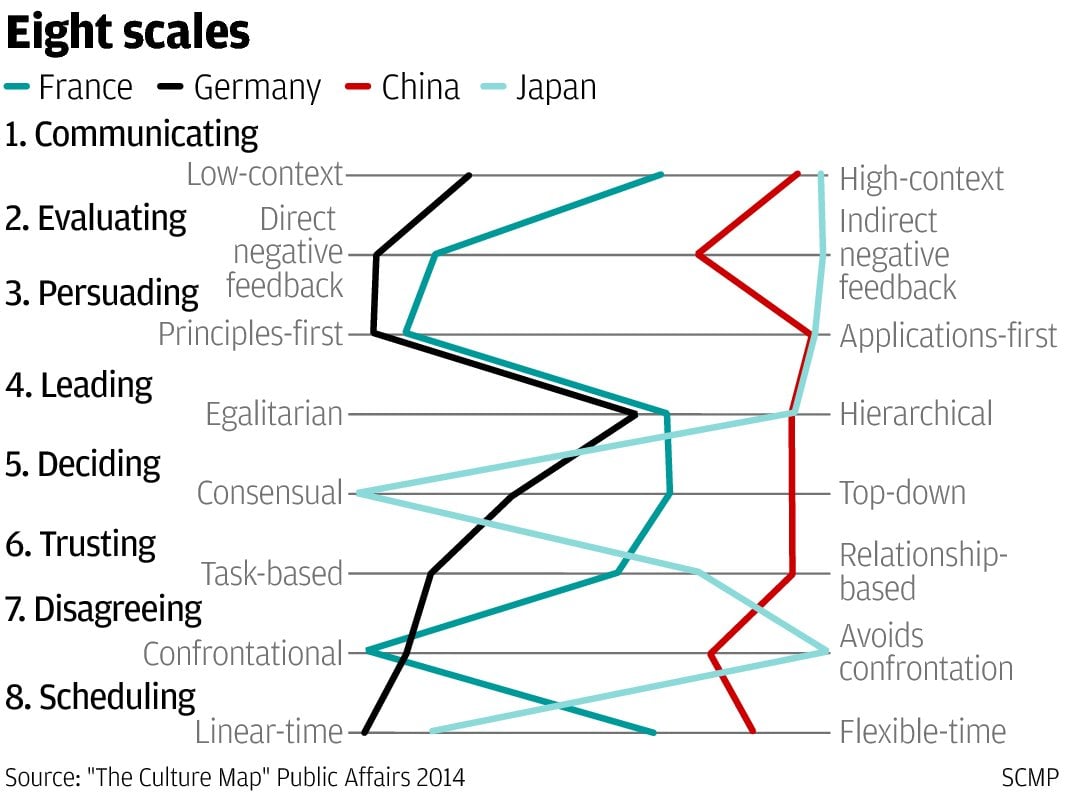When getting to communicate with others, there are two
aspects that will always, or most of the times take place in the negotiation,
dialogue or interaction; and assuming it in the wrong way will lead to conflict
or uncomfortable situations. Based on this, I decided that “The silence” and
“The haptic” are the most important topics of the class. As we know the haptics can be mostly related
to the behavior of the person that comes from the culture in which he or she grew
up; the necessity to touch someone increase or decrease depending on the
culture or the confidence between the people, but there is a common error that
appear in the barriers to communication and it is assuming similarities, you
cannot treat people from a different or a same culture, the way you treat your
relatives or friends. The haptics can
mean many things as we said in class, affection, confident, need for attention,
attachment, but also sexual content; I will like to highlight an example based
on the Tv show “Outsourced: Touch of an Anglo” that talk about an
internationalized firma located in India with a American boss (Todd)that do not
know anything about this culture, for him touching the others was a pretty
normal and friendly action, but he didn’t realize that in India, touching the
shoulder has a sexual content and can be very offensive, his bigger problem was
assuming the similarity with the American culture, and due to this situation he
was almost fired.





As the professor Peter
Andersen
says "A person who touches a lot says, 'I'm a friendly, intimate person.'
More touch-oriented doctors, teachers, and managers get higher ratings."
I do agree that touching can help
improve a relation, and also give a nicer or warmer perception or image of the
person, but, is important always to have in mind the concept of proxemics, that
is known as the personal space, and that is also related to the culture.
In the other hand the silence can
play a big role when interacting with others, as this action can have lots
of meanings. “Silence grants the point
or Silence implies or gives consent”, when
someone prefer or decide not to say something, the other can get into many
conclusions, maybe this person agree or disagree about my idea, or maybe is
confuse, or embarrass, or it’s just a
way to show me respect; that may end
with a feeling of insecurity in the “Receptor”. But how a person can deal or handle
the silence? This is a complex question, due to all the implicit possibilities
that it implies; the best way will be to stop assuming things, or trying to
wonder or figure out what the other wanted to say by the “silence”, and this is
due to the tendency of assuming negative messages, which can lead to
misunderstandings, because “Discomfort lies in
uncertainty”. If you don’t know what the other mean by keeping the silence,
just ask what they want to transmit by doing it.
For my research question I found really interesting
the development model of intercultural sensitivity that is related to
ethnocentrism, the other reason is that I was a little confuse about this topic
because of the quality of the slide and the short time it was due. So I will
like to go deeper in the study of this model, that is used in an international
way to help training intercultural relations and that way, facilitate the assess
to an intercultural competence; to start it was created by Dr. Milton Bennett
(1986 - 1993), which is the founder of the
ICI, known as the Intercultural Communication Institute,
and also of the IDRI, also known as the
Intercultural Development Research Institute, that help to the deep and extended
research of the intercultural development, and therefore facilitate the intercultural adaptation.
He
created this model with the purpose to explain the way the people react or
respond to the differences that each culture possesses. When the relation or
interaction increases, then this “relationship” will make this difference of culture
complex. The three first stages will be related to the ethnocentrism, leading
to the stages of “Denial, the avoidance of other cultures, because they are
seen as different or abnormal”, “Defense, the tendency to critic in a highly
way the people from other cultures, creating a status where there is a superior
culture and therefore an inferior one.” and “Minimization, the trivialization
of the culture, which look for the correction or adjustment of the others behaviors to look for similarities
and that way to reach their ideals”. The second three stages will be related to
the ethnorelative, and with this stages comes the “Acceptance, the necessity of
understanding the differences in a culture, due to the increase of interaction
with others”, the “Adaptation, the interaction with a different culture, will
help improve or even change in some way the perception and/ or behavior of the
existing one to adapt easily “ and finally the “Integration, the total inclusion into the new culture,
caused by a feeling of union and equality”.










